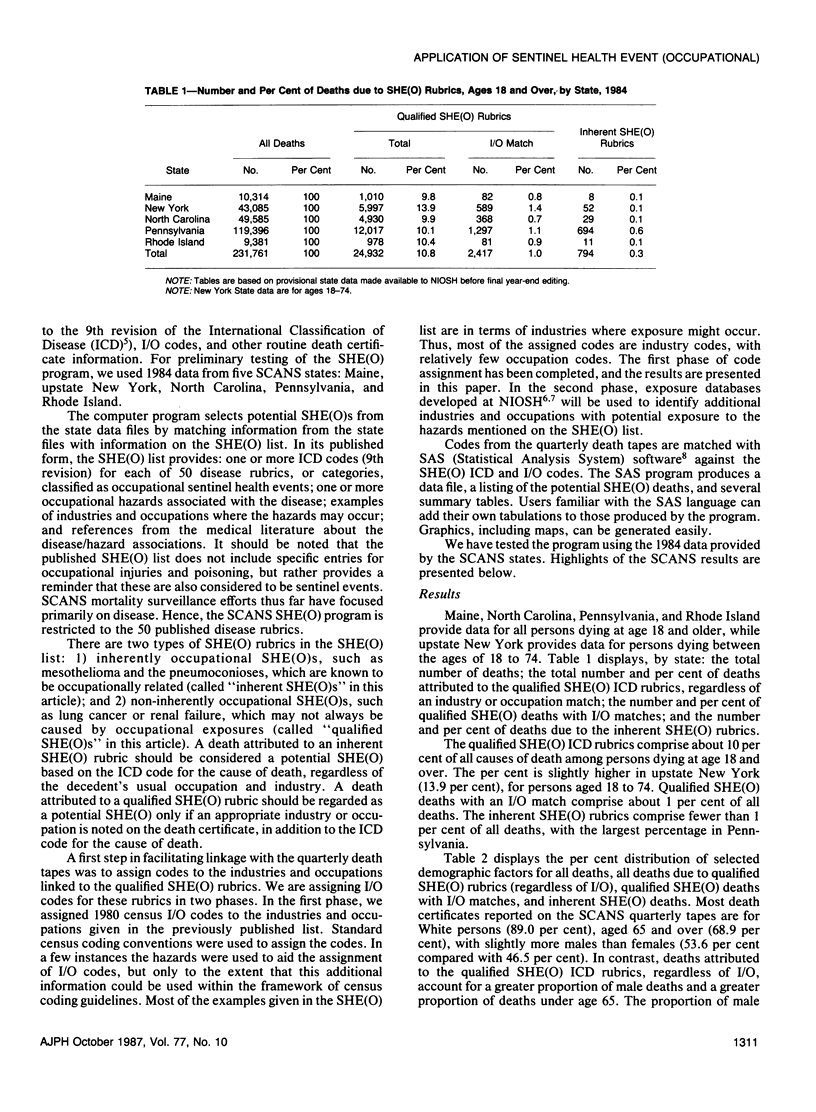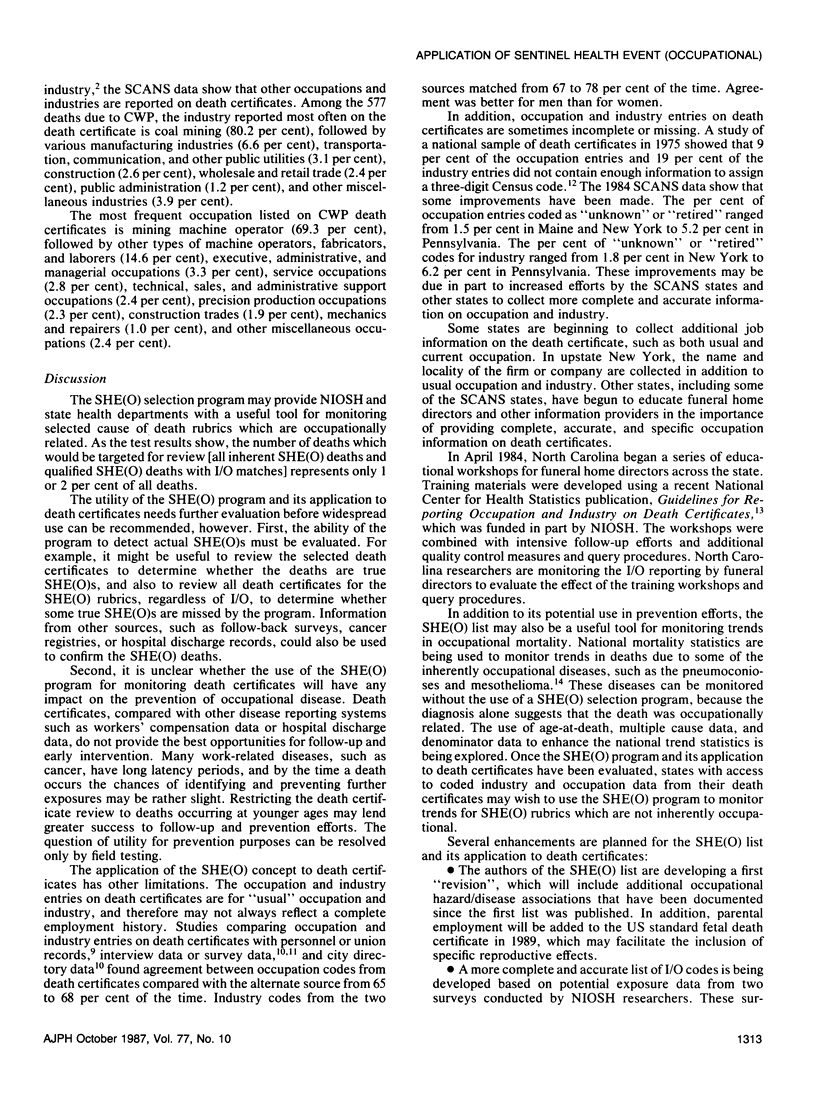Abstract
This article describes a computer-based application of the Sentinel Health Event (Occupational) [SHE(O)] concept, developed in conjunction with five states, to monitor deaths which are occupationally related. The states have coded their state death certificate files for industry and occupation, using the decedent's usual occupation and industry as reported on the death certificate. From these files, the SHE(O) computer program selects deaths which are likely to be work-related, based on a previously published SHE(O) list of 50 disease rubrics and associated industries and occupations. The computer program matches the SHE(O) list with the recorded industry, occupation, and underlying cause of death. The program has been tested using 1984 death certificate data from Maine, upstate New York (excluding New York City), North Carolina, Pennsylvania, and Rhode Island. Approximately 1 to 2 per cent of all deaths were selected by the program, with lung cancer and coal workers' pneumoconiosis being the most frequent cause of death. The SHE(O) program may be useful for identifying deaths which are potentially occupationally related, but its utility and its application to death certificates needs further evaluation before recommending widespread use. Limitations are discussed, as well as plans for improving the application of the SHE(O) concept to death certificates.
Full text
PDF




Selected References
These references are in PubMed. This may not be the complete list of references from this article.
- Gute D. M., Fulton J. P. Agreement of occupation and industry data on Rhode Island death certificates with two alternative sources of information. Public Health Rep. 1985 Jan-Feb;100(1):65–72. [PMC free article] [PubMed] [Google Scholar]
- Rutstein D. D., Berenberg W., Chalmers T. C., Child C. G., 3rd, Fishman A. P., Perrin E. B. Measuring the quality of medical care. A clinical method. N Engl J Med. 1976 Mar 11;294(11):582–588. doi: 10.1056/NEJM197603112941104. [DOI] [PubMed] [Google Scholar]
- Rutstein D. D., Mullan R. J., Frazier T. M., Halperin W. E., Melius J. M., Sestito J. P. Sentinel Health Events (occupational): a basis for physician recognition and public health surveillance. Am J Public Health. 1983 Sep;73(9):1054–1062. doi: 10.2105/ajph.73.9.1054. [DOI] [PMC free article] [PubMed] [Google Scholar]
- Schumacher M. C. Comparison of occupation and industry information from death certificates and interviews. Am J Public Health. 1986 Jun;76(6):635–637. doi: 10.2105/ajph.76.6.635. [DOI] [PMC free article] [PubMed] [Google Scholar]
- Steenland K., Beaumont J. The accuracy of occupation and industry data on death certificates. J Occup Med. 1984 Apr;26(4):288–296. [PubMed] [Google Scholar]


